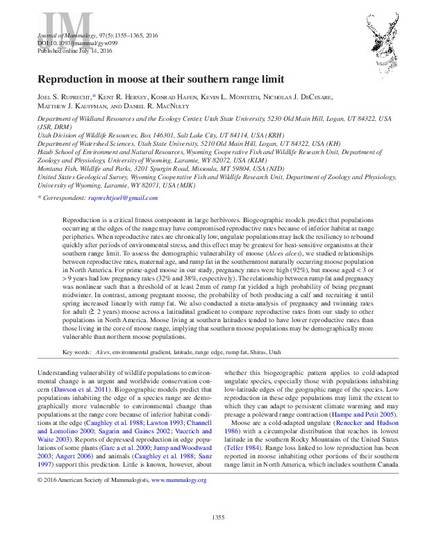
Article
Reproduction in Moose at Their Southern Range Limit
Mammalogy
(2016)
Abstract
Reproduction is a critical fitness component in large herbivores. Biogeographic models predict that populations occurring at the edges of the range may have compromised reproductive rates because of inferior habitat at range peripheries. When reproductive rates are chronically low, ungulate populations may lack the resiliency to rebound quickly after periods of environmental stress, and this effect may be greatest for heat-sensitive organisms at their southern range limit. To assess the demographic vulnerability of moose ( Alces alces ), we studied relationships between reproductive rates, maternal age, and rump fat in the southernmost naturally occurring moose population in North America. For prime-aged moose in our study, pregnancy rates were high (92%), but moose aged < 3 or > 9 years had low pregnancy rates (32% and 38%, respectively). The relationship between rump fat and pregnancy was nonlinear such that a threshold of at least 2mm of rump fat yielded a high probability of being pregnant midwinter. In contrast, among pregnant moose, the probability of both producing a calf and recruiting it until spring increased linearly with rump fat.
Disciplines
Publication Date
2016
DOI
10.1093/jmammal/gyw099
Citation Information
Dan R. MacNulty. "Reproduction in Moose at Their Southern Range Limit" Mammalogy Vol. 97 Iss. 5 (2016) p. 1355 - 1365 Available at: http://works.bepress.com/dan_macnulty/67/
